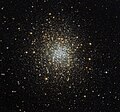Ficheiro:Palomar 2 Hubble.jpg

Dimensões desta antevisão: 643 × 599 píxeis. Outras resoluções: 257 × 240 píxeis | 515 × 480 píxeis | 824 × 768 píxeis | 1 098 × 1 024 píxeis | 2 197 × 2 048 píxeis | 4 146 × 3 865 píxeis.
Imagem numa resolução maior (4 146 × 3 865 píxeis, tamanho: 10,9 MB, tipo MIME: image/jpeg)
Histórico do ficheiro
Clique uma data e hora para ver o ficheiro tal como ele se encontrava nessa altura.
| Data e hora | Miniatura | Dimensões | Utilizador | Comentário | |
|---|---|---|---|---|---|
| atual | 08h38min de 17 de abril de 2013 |  | 4 146 × 3 865 (10,9 MB) | Fabian RRRR | {{Information |Description='''Palomar 2 - A unique cluster: one of the hidden 15''' Globular clusters are relatively common in our sky, and generally look similar. However, this image, taken using the NASA/ESA Hubble Space Telescope, shows a unique ex... |
Utilização local do ficheiro
As seguintes 2 páginas usam este ficheiro:
Utilização global do ficheiro
As seguintes wikis usam este ficheiro:
- ar.wiki.x.io
- ckb.wiki.x.io
- cs.wiki.x.io
- de.wiki.x.io
- el.wiki.x.io
- en.wiki.x.io
- fr.wiki.x.io
- lb.wiki.x.io
- pl.wiki.x.io
- ru.wiki.x.io
- sv.wiki.x.io
- tr.wiki.x.io
- www.wikidata.org